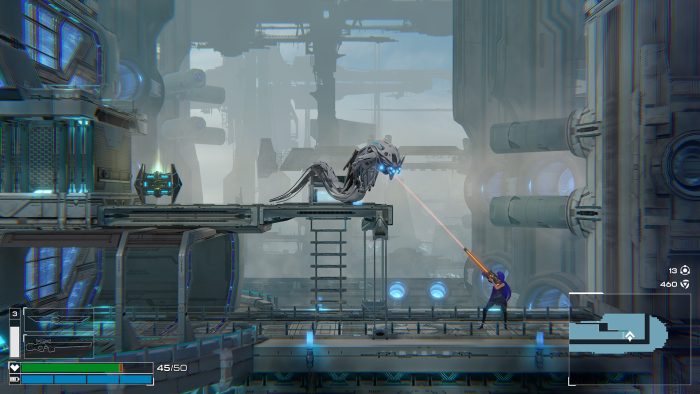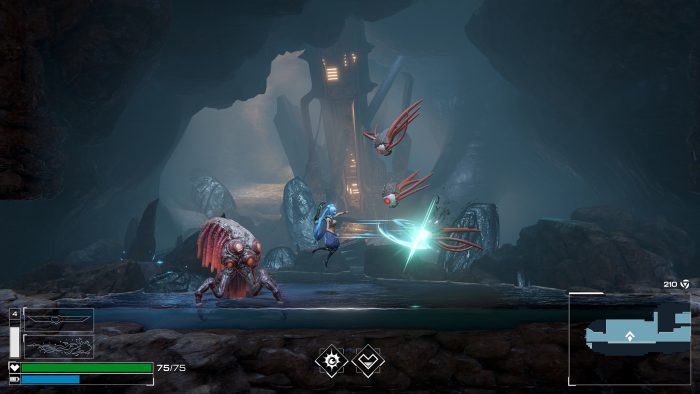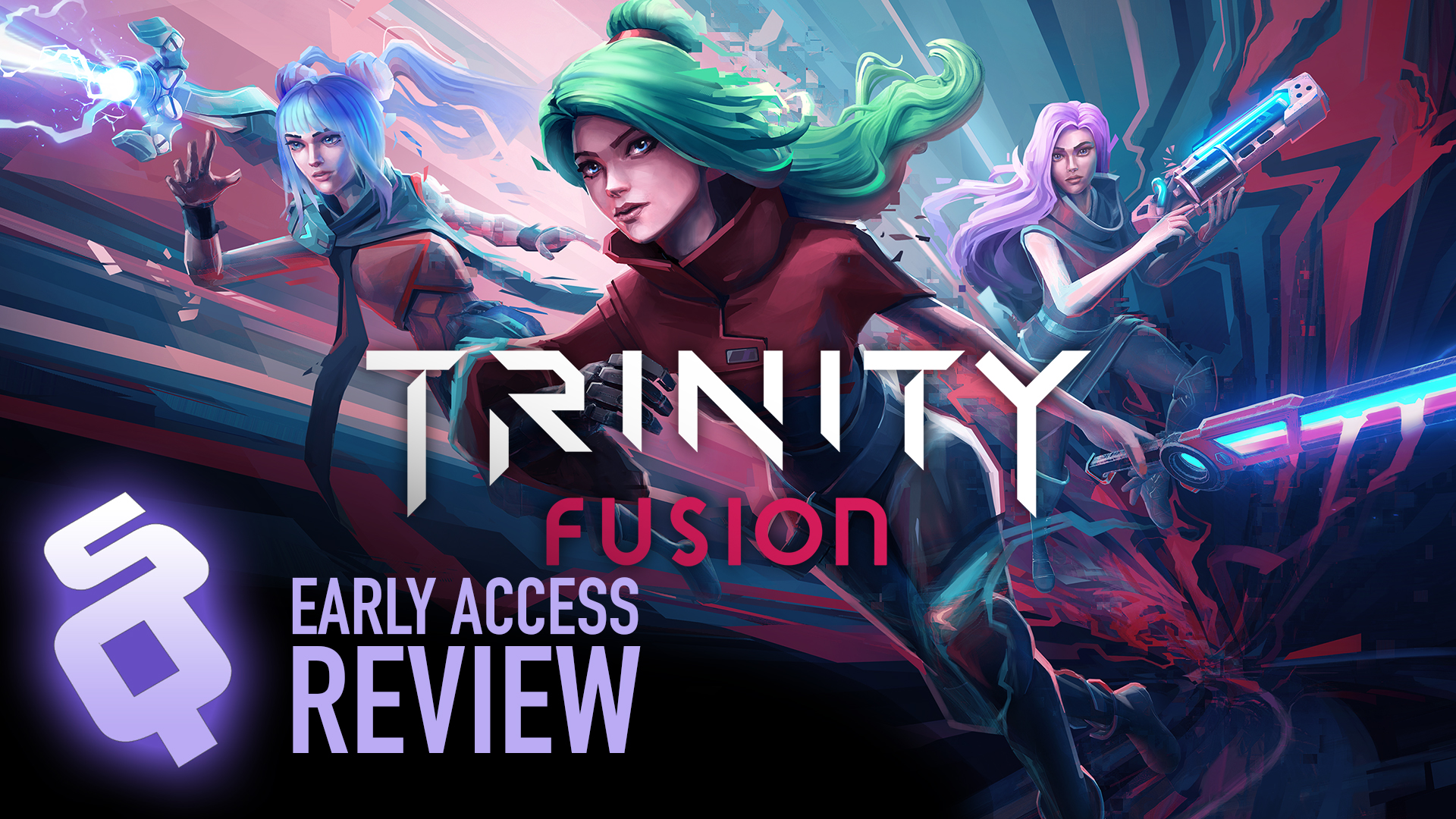Great platforming and a neat portal-jumping hook combine in this fun roguelike experience
Trinity Fusion is an unassuming game that ends up delivering much more than I expected when I first took up the controls. Yes it’s a roguelike platformer, and yes it incorporates Metroidvania aspects and a character growth progression system, but the details and touches placed throughout the project deliver an experience that ends up feeling more and more well crafted as we make our way through.
Typically when I play roguelikes I tend to jump headfirst in that first run, hoping to get as far as possible, collect as much as possible, and even see if I can take down a few bosses or clear enough levels along the way. I go in as if I’m going to complete the game on my first try. But here that’s not the case; with Trinity Fusion I realized that dying was a big part of that initial run, and one that introduces the narrative side of the equation. In fact there’s a whole story aspect that is actually kind of compelling from a sci-fi standpoint, especially in world-building and pseudo history. As we make our way through that initial level and eventually fail, death sends us back to a hub world where we find out that essentially our entire existence is sort of a lie; we live in a multiverse of worlds developed by architects, and worlds that are more and more realizing that a struggle for survival requires them to be at war with each other for dominance and subjugation.
Okay, cool, you have me interested.

This hub is used as not only a central point between the worlds but also as a training area to learn some of the skills and tools that will help us along the way. The hook in In Trinity Fusion involves us traversing our way across 2D levels defeating enemies, clearing obstacles, picking up loot, and unlocking and hopping through portals to jump into the other worlds of the game. Each world is its own style of biome, but there are several areas within each. There are often areas where we’ll come across an obstacle that we can’t seem to pass — after decades of gaming it’s become ingrained in my head that I’m going to have to come back once I unlock some ability or item, and here that involves heading to the other worlds first… or by switching over to one of the other two alternate versions of our hero that may have the skills necessary.
That part is great. Not only can we approach the game with our current hero of choice, but there are several ways to take on some of the obstacles that allows us to do it with someone else, albeit differently. Getting across a gap is probably the easiest way to convey this. We can ride the existing, slow platform across, but one of our other heroines can double jump through, and the other can grapple. But if we’re feeling adventurous we can further try bounding across enemies, running through the electrified floor, or avoiding it all together by portaling past. It’s these types of situations that not only explain the game’s variety but also allow us to angle towards our favorite character and learn what makes them capable in their own right.
Speaking of variety, the enemy design is worth the experience alone. The team initially developed the game around different types of creatures before bringing it together with the idea of a multiverse. Some are huge and monstrous and some are sleek and robotic. They’re all uniquely identifiable and memorable. As I play I want to see how every enemy, every boss, and every obstacle is presented, and I even look forward to taking them on each time because it means I have to approach them all differently. Sometimes I need to be up close to a monster and take them down with a melee, sometimes I need to slide underneath and attack from behind, and sometimes I need to hit them with a ranged weapon and THEN do a secondary attack.

The game pushes us forward to want to see them, blitzing through levels and worlds. But there is a bit of a weird difficulty spike on that path. As we jump from one level to the next the enemies feel like they’re ten times stronger than where we just came from, causing us to mentally reset from feeling strong enough to survive to suddenly being weaklings again. And then we die and we’re stuck pushing through the initial areas again. It causes a bit of a grind to get us built up only to slow us down almost immediately, so that balance definitely needs to be adjusted or else we’ll end up getting worn out.
Trinity Fusion approaches roguelike platforming with a great hook and solid visuals. Terrific enemy design and multiple ways to approach obstacles makes every playthrough enjoyable, and keeps us interested in whatever is coming up next. It’s also perfect on the Steam Deck, which is something I’ve been looking more for in games lately. It’s a worthy new entry in a quickly growing genre, and apart from that grind it mostly makes our time feel valuable when we hop in.
This Hot Take Early Access review is based on a Steam code sent to SideQuesting. It originally appeared on the April 26th, 2023 episode of The SideQuest. All images and video courtesy Angry Mob Games.



No Comments